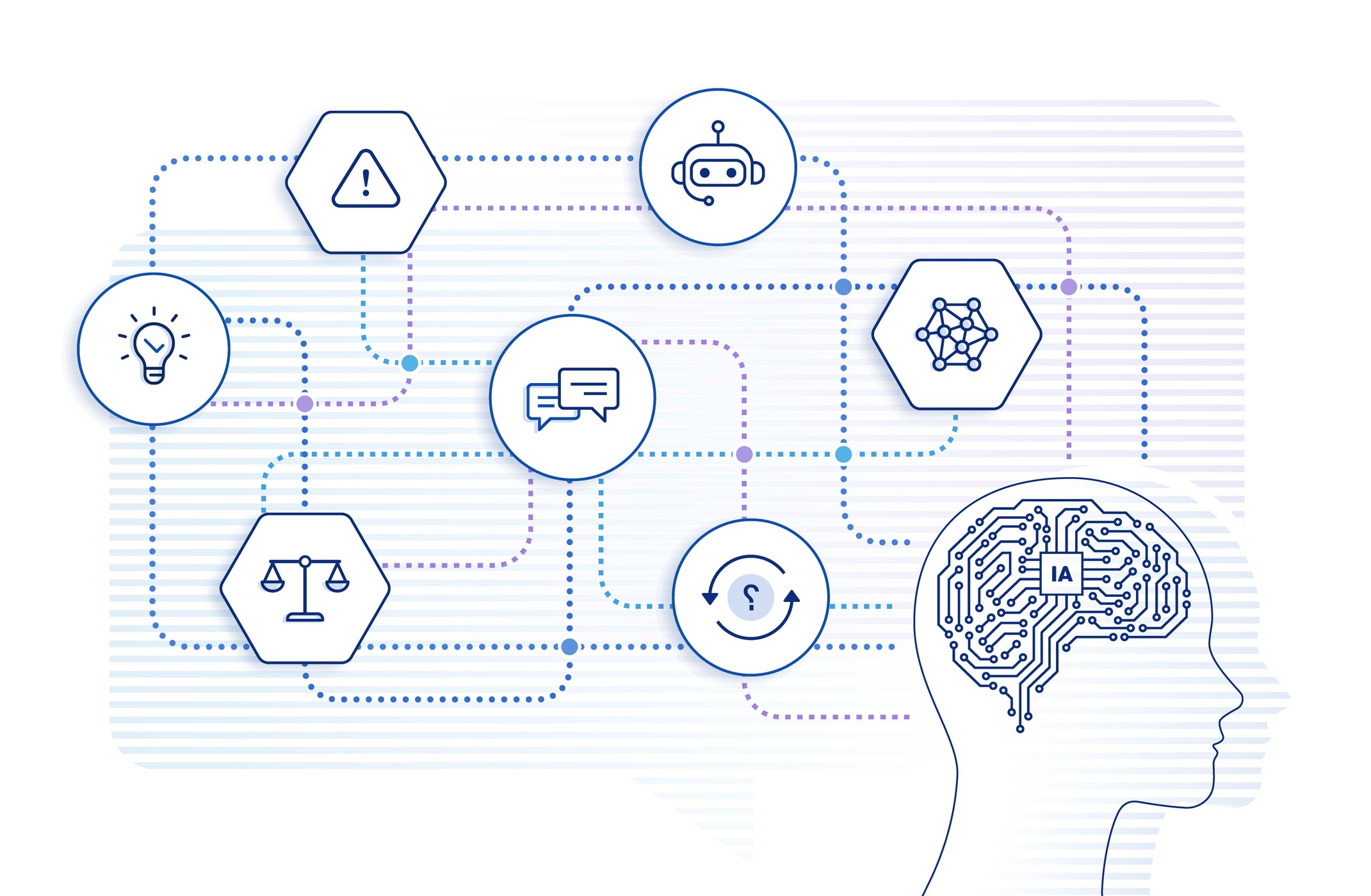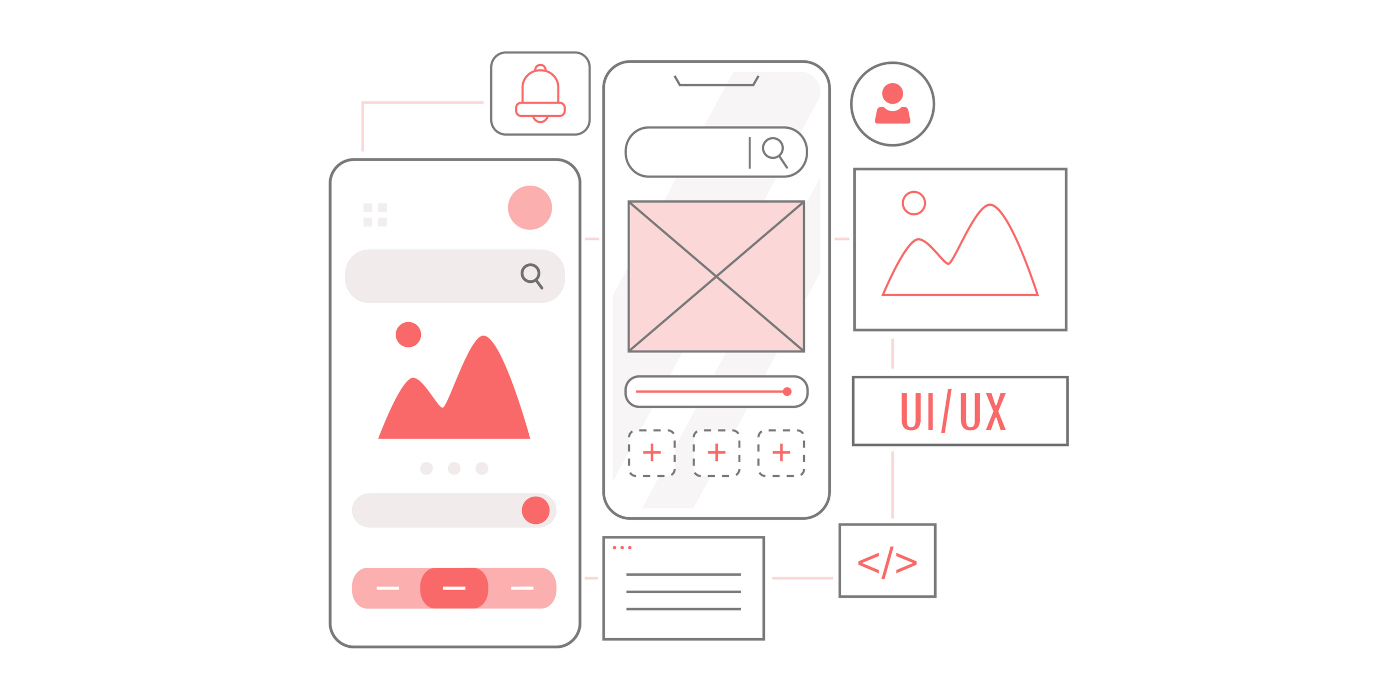User Experience (UX) Design is the art and science of creating digital environments that are not only aesthetically pleasing but also intuitive, efficient, and satisfying for the user. This discipline is pivotal because it directly influences how users interact with websites and applications, shaping their perceptions, satisfaction, and overall engagement.
Simultaneously, Machine Learning (ML) is emerging as a transformative force in various sectors, including web development. At its core, Machine Learning is a subset of artificial intelligence that enables systems to learn and improve from experience without being explicitly programmed.
In the context of UX Design, ML provides an opportunity to elevate and personalize the user experience in unprecedented ways. By analyzing user data and behaviour patterns, ML algorithms can anticipate user needs, automate tasks, and present more relevant content, making interactions more efficient and enjoyable.
The integration of Machine Learning into User Experience Design marks a significant leap forward in how we approach website and application development. This convergence promises to bring about a more dynamic, responsive, and user-centered design philosophy.
Synergy between Machine Learning and User Experience
Machine Learning (ML) is a branch of artificial intelligence that focuses on building systems capable of learning from and making decisions based on data. Unlike traditional programming, where actions are explicitly defined, ML allows for the development of algorithms that can analyze and draw conclusions from complex datasets. This capability enables ML systems to adapt and improve over time, becoming more efficient and accurate in their predictions and actions.
In essence, ML is about extracting knowledge from data. It involves training algorithms on a data set, allowing them to learn patterns and relationships within that data. Once trained, these algorithms can make predictions or decisions when presented with new, similar data. There are various approaches to ML, including supervised learning, unsupervised learning, and reinforcement learning, each with its specific applications and methods.
Machine Learning in User Experience Design
The incorporation of Machine Learning into UX Design is a natural progression in the evolution of technology and user interfaces. ML's capability to analyze large volumes of user data and extract meaningful patterns plays a pivotal role in creating more personalized and responsive user experiences. This personalized approach can manifest in various aspects of UX:
-
Personalization
ML algorithms can analyze user behaviour, preferences, and interactions, allowing designers to create interfaces that adapt to individual users. This personalization can range from customized content recommendations to adaptive user interfaces that change based on user needs. -
Predictive User Experience
Machine Learning enables predictive UX, where the system anticipates the user's next move or need based on their previous interactions. This proactive approach can enhance user satisfaction by making the user's journey smoother and more intuitive. -
Enhanced Usability Testing
ML can be used to analyze user interaction data, providing insights into how users are engaging with a product. This information can be invaluable for identifying pain points and areas for improvement, leading to more user-friendly designs. -
Automating Repetitive Tasks
Machine Learning can automate routine tasks in UX design, such as sorting through user feedback or conducting A/B tests. This automation frees up designers to focus on more creative and complex aspects of UX design.
The synergy between Machine Learning and UX Design lies in ML's ability to provide deep insights into user behaviour and preferences, which can be leveraged to create more engaging, intuitive, and personalized user experiences. This integration marks a shift towards more intelligent, data-driven design processes that have the potential to significantly enhance the effectiveness of digital interfaces.
Transformative Approaches in UX Design
Tailoring user experience based on behaviour
Machine Learning algorithms excel at analyzing vast amounts of user interaction data. This capability allows for the customization of user experiences on an individual level. By understanding each user's behaviour, preferences, and engagement patterns, ML-driven systems can present content, suggestions, and interfaces that are uniquely tailored to each user. This personalized approach not only enhances user satisfaction but also increases the likelihood of prolonged engagement and loyalty.
Improved User Interface (UI) Design
Machine Learning enables the dynamic modification of user interfaces to better suit individual users or user groups. This adaptability can manifest in various forms, such as changing the layout, color scheme, or even the navigation based on the user’s interaction history or preferences. Such real-time adjustments make the interface more intuitive and user-friendly, significantly improving the overall user experience.
User Behaviour Analysis
One of the most impactful applications of Machine Learning in User Experience is its ability to predict user behaviour and preferences. By continuously analyzing how users interact with a platform, ML algorithms can identify patterns and trends that human designers might overlook. These insights can then be used to anticipate user needs, even before the user explicitly expresses them, thereby creating a proactive and highly responsive user experience. This level of anticipation in design not only meets but often exceeds user expectations, setting a new standard in user-centric design.
Real-world Impact of Machine Learning on UX
The integration of Machine Learning in User Experience Design has already begun to show significant results across various industries. By examining a few key examples, we can understand the practical applications and benefits of this technology.
E-Commerce Industry
- Example: A leading online retailer implemented ML to personalize shopping experiences. The system analyzed past purchases, browsing history, and user ratings to recommend products.
- Key Takeaway: Increased sales and customer satisfaction were observed, as users found it easier to locate products aligned with their interests.
Banking and Finance Sector
- Example: A multinational bank used ML to enhance its mobile banking app's user interface. The app adapts its features and presentation based on the user's most frequent transactions and preferences.
- Key Takeaway: Customers reported a more efficient and enjoyable banking experience, leading to higher app usage rates and improved customer retention.
Healthcare Industry
- Example: A health tech company used ML to streamline patient interaction with their app. The system predicted patients' information needs based on their medical history and app usage patterns.
- Key Takeaway: Enhanced patient engagement and satisfaction, as users received personalized information and recommendations, improving their healthcare experience.
Travel and Hospitality
- Example: A travel booking website incorporated ML to suggest destinations, flights, and accommodations based on user behaviour and previous bookings.
- Key Takeaway: Users experienced a more streamlined booking process, with increased likelihood of finding deals and options that matched their preferences, leading to higher booking rates.
Entertainment and Media
- Example: A streaming service used ML algorithms for content recommendation. Viewers received suggestions based on their viewing history, search patterns, and ratings.
- Key Takeaway: Improved user engagement and subscription retention rates, as viewers spent less time searching and more time enjoying content tailored to their tastes.
These case studies demonstrate the broad and versatile applications of Machine Learning in enhancing User Experience across different sectors. The consistent key takeaway is the ability of ML to create more personalized, efficient, and user-friendly experiences, which translates into tangible benefits like increased engagement, satisfaction, and business performance.
Future of User Experience with Machine Learning
The future of User Experience with Machine Learning is poised to be transformative and innovative. As ML technology continues to evolve, its integration into UX design is expected to become more sophisticated, leading to even more personalized and intuitive user experiences.
In the coming years, we can anticipate:
-
Advanced Personalization
Deeper learning about user preferences will enable the creation of highly customized user experiences that adapt in real-time. -
Proactive User Assistance
ML could predict user needs and offer assistance or options before the user explicitly requests them, enhancing the overall efficiency and user satisfaction. -
Automated Design Elements
The role of ML in automating certain design tasks will grow, allowing for more rapid prototyping and iteration based on user feedback and behaviour. -
Voice and Gesture-Based Interfaces
As ML becomes more adept at understanding natural language and gestures, we'll likely see a rise in voice and gesture-controlled interfaces, making the user experience even more seamless and engaging. -
Ethical and Privacy Considerations
With the increasing use of user data in ML, ethical use and privacy protection will become even more critical. Ensuring user trust will be paramount in the design of future ML-driven UX systems.
Machine Learning holds the potential to redefine UX Design, making it more user-centric, efficient, and dynamic. As this technology advances, it will continue to grow new possibilities and set new standards in how we interact with digital products and services
Looking Ahead - The Future of UX
As we progress, the integration of Machine Learning (ML) in User Experience (UX) design is poised to dramatically transform the field. Here are some key predictions and trends to watch for:
Increased Emphasis on User Data Security and Privacy
With ML relying heavily on user data, there will be a greater focus on securing and ethically handling this data. Privacy-preserving techniques like federated learning might become standard in UX design processes.
Rise of Adaptive and Context-Aware Interfaces
Future UX designs are likely to be more adaptive, changing in real-time based on the user’s context, behaviour, and preferences. This shift will result in interfaces that are not static but evolve continuously to suit individual user needs.
Enhanced Accessibility through ML
Machine Learning has the potential to make UX more inclusive. By understanding and adapting to the needs of users with different abilities, ML can drive the creation of more accessible designs, ensuring a broader range of users can interact with digital products seamlessly.
Predictive UX Becomes Mainstream
Predictive UX, where systems anticipate the user’s next move or need, will become more prevalent. This approach will minimize user effort and streamline interactions, enhancing the overall user experience.
Integration of Augmented Reality (AR) and Virtual Reality (VR)
As these technologies mature, their integration with ML in UX design will create more immersive and interactive experiences. This could redefine how users interact with digital environments.
Designers in a Machine Learning-driven World
In a ML-driven UX world, the role of designers will evolve significantly:
-
From Designers to Experience Architects
Designers will transition from creating static interfaces to architecting dynamic, responsive experiences that adapt to user behaviour and preferences. -
Emphasis on Data-Driven Design Decisions
Designers will increasingly rely on data and insights derived from ML to inform their design decisions, moving away from intuition-based approaches. -
Collaboration with AI and ML Experts
There will be a greater need for collaboration between UX designers and AI/ML experts. This collaboration will be crucial to harnessing the full potential of ML in creating innovative UX solutions. -
Focus on Ethical Design Practices
Designers will play a key role in ensuring that the integration of ML in UX respects user privacy and ethical standards, balancing technological possibilities with moral responsibilities. -
Continuous Learning and Adaptation
Designers will need to continuously update their skills and knowledge to keep pace with the rapid advancements in ML and related technologies.
The future of UX in a ML-driven world is bright and full of possibilities. It promises more personalized, efficient, and engaging user experiences, while also placing new responsibilities and opportunities in the hands of UX designers. As we look ahead, it is clear that the fusion of Machine Learning and UX design will be a driving force in shaping the next generation of digital experiences.
The ongoing importance of integrating Machine Learning into UX Design cannot be overstated. As technology progresses, this integration will become essential for creating innovative, efficient, and highly personalized user experiences. The role of ML in UX is not just a passing trend; it's a fundamental shift in how we approach design and user interaction.




